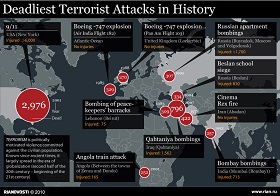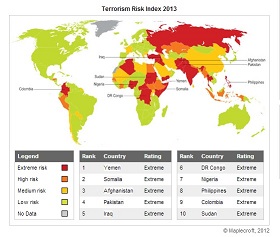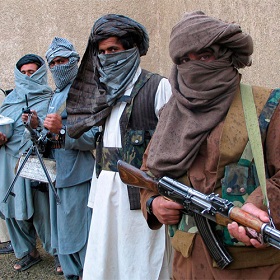A Lethal Threat
The 9/11 terrorist attacks have given rise to
previously unseen unity of countries facing this
new global peril.
(no votes) |
(0 votes) |
PhD in Political Science, Associate Professor at World Politics Department, MGIMO University
In the 2000s, fighting global terrorism has become a key area for international cooperation. Although the achievements of international world community in this area are tangible, the threat still looms over both individual nation-states and the entire international system. Moreover, in the next 100 years, the menace of terrorism is likely to increase scope and level of violence.
In the 2000s, fighting global terrorism has become a key area for international cooperation. Although the achievements of international world community in this area are tangible, the threat still looms over both individual nation-states and the entire international system. Moreover, in the next 100 years, the menace of terrorism is likely to increase scope and level of violence.
Terrorism in the 20th Century: from National to Worldwide
Over the past decade, terrorism has been invariably high on the international security agenda. The 9/11 terrorist attacks, the most disastrous in human history [1], have given rise to previously unseen unity of countries facing this new global peril. Historically, terrorism has always been a form of non-systemic political opposition, usually pursuing twofold goals, i.e. influencing domestic politics through threats and blackmail and attracting international attention to a certain issue.
Intrinsically, terrorism is:
- intentional rather than impulsive;
- political rather than criminal as it aims at political change but not economic gains;
- targeted against civilians rather than against the military;
- used by sub-national groups.
To properly understand terrorism as a phenomenon of the new age, we should examine the events of the 20th century, more specifically at the peak of terrorism during the 1960-1980s with the rise of mainly nationalist and anarchist entities like the Red Brigades in Italy, the Armed Islamic Group in Algeria, the Irish Republican Army (IRA), the Palestine Liberation Organization (PLO), the Red Army Faction in Germany, the Red Army in Japan, the Shining Path in Peru, etc., which all strived for political change in their home countries.
In the 1970-1980s, various terrorist organizations received substantial help from anti-imperialist Libya, among other things through shelter on its territory. Tripoli's approach gave a major boost to the internationalization of terrorist activities and set the stage for international terrorism. Furthermore, the Libyan authorities were also directly involved in terrorist acts, with the most graphic examples being the bombings of a Berlin disco in 1986 and a Pan American airliner over the Scottish town of Lockerbie in 1988, the latter killing 270 people.
In the 1990s, global terrorism underwent drastic changes, while the threat grew considerably due to emergence of faith-based and fundamentalist terrorist networks. The upsurge dates back to 1995, when adherents of the Aim Shinrikyo cult released the nerve gas sarin in the Tokyo subway, causing 12 fatalities and leaving 5,000 injured. In 1998, the U.S. embassies in Kenya and Tanzania were bombed with the death toll of 257. These attacks appeared to be directly linked to the Islamist al Qaeda headed by Osama bin Laden, though it was only after the 9/11 attacks that the world became fully aware of the dangers emanating from fundamentalist terrorist groups.
The Terrorism Threat of Today: Lesser Diversity, Greater Scale
The terrorism of today is quite diverse. Apart from its leftist and rightist wings, marginalized after the breakup of the world's bipolar system, two more basic types have appeared, i.e. ethno-national/separatist and religious/faith-based terrorism.
After the global war on terrorism was launched in 2001, numerous ethno-national/separatist groups had to slow down their operations, among them the Euskadi Ta Askatasuna (ETA – Basque Homeland and Freedom), all versions of the IRA, the National Liberation Front of Corsica, etc. They are still present on the predominantly national level and seek domestic change. Moreover, some of these groups have managed to integrate into existing political systems, for example the Sinn Fein, Northern Ireland's second largest political force that has been historically associated with the IRA and presents a variant of its political wing. The PLO has also gained legitimacy, setting up the Fatah Party that also incorporates Mahmoud Abbas, the leader of the Palestine Authority. As soon as some terrorist organizations become part of the political system (even the international system in the case of Fatah), usually their rogue behavior loses steam.
However, religious/faith-based terrorism appears the most dangerous, as represented by Islamist groups which essentially constitute a non-systemic opposition to the international political structure and focus their hatred on the U.S.A. and the ideals and values the Americans promote in the international arena.
Over the past decade, there have been numerous scholarly attempts to explain the emergence of the new terrorist international in the Muslim world, most of them agreeing on two key factors. First, Muslim states have been through objective political, economic and social troubles that have driven them to the periphery of international processes, primarily globalization. Second, the US.A. has been shortsightedly supporting Muslim regimes that have essentially disconnected from their peoples and that have failed to offer effective means for economic development.
To this end, the role of Islam is also significant, for in contrast to other religions it involves an integral system of social relations, a modus vivendi. For most Muslims, Islam is inseparable from politics, legislation, education, public life and the economy. Many believers regard the holy script of Quran as the only path to the revival of the Muslim grandeur lost after the disintegration of the Ottoman Empire almost 100 years ago. Islamism, i.e. political Islam, among other things calls for the establishment of Sharia law, a return to the caliphate system, and state control over education.
New Facets of the Old Threat
Over the next 100 years, ethno-national/separatist terrorism is unlikely to change fundamentally, since it has basically stabilized in form, strives for fairly clear-cut, even if sometimes unattainable, goals, and practices well-known tactics and strategies.
Ethno-national/separatist terrorism is to remain a target for the primarily domestic security services of individual countries where these groups operate. International cooperation may be of use only through the efforts of law enforcers of neighboring states, as in case of the Basque separatists. These groups are also expected to slow down their activities against the advance of processes of integration that are erasing border and enhancing cooperation rather than confrontation. The decline will also result from an expansion of opportunities for participation in the political life of the state at different levels. Certain groups are also likely to give up their terrorist methods, while others will be eliminated, as was the case in 2009 with the Liberation Tigers of Tamil Eelam in Sri Lanka.
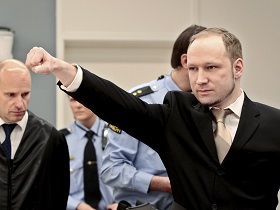
As of now, right-wingers are represented mostly
by individuals like the Norwegian Anders Breivik,
although their rise appears likely if migration
problems continue to increase, especially in
Europe
The revival of rightist and leftist terrorism on the domestic level may also pose a significant threat.
As of now, right-wingers are represented mostly by individuals like the Norwegian Anders Breivik, although their rise appears likely if migration problems continue to increase, especially in Europe. Unwilling to adjust to traditional European values, many immigrants prefer to gather in socio-cultural enclaves, which generates more tensions vis-à-vis local populations.
Left-wing terrorism may become popular if the capitalist system plunges into a deeper crisis which would offer a perfect environment for alternative visions of global socio-economic structures, for example Marxist ones. At first, such attempts will definitely be made at the state level, but with time we might expect a terrorist international under Marxist banners, united by hatred against the capitalist system and naturally against the U.S.A. as its embodiment.
The prospects for transnational Islamist movement appear more complicated, as the movement has continued to evolve even after the elimination of its leader Osama bin Laden in 2011.
The decay of the nation state is to become the key facilitator for the rise of the Islamists. Weak and failed states will provide terrorists with perfect shelters, while impoverished locals should fall easy prey to skillful recruiters. Certain states are losing control over their territories with perplexing ease. French military intrusion was needed in Mali where the Touareg tribes over just several months occupied almost two-thirds of the territory. Any unstable state in the Middle East and Africa – Egypt, Libya, Syria, Gaza Strip, etc. – immediately becomes a target for terrorist groups.
Welcomed by the West as a conscious desire for democratic change, the Arab Spring has eventually played into the Islamists' hands. These movements even came to power in Egypt, ripping apart society and provoking another revolutionary spiral in the summer of 2013. Moreover, the toppling of the consistently anti-terrorist secular Muslim regimes (Iraq, Libya, and Egypt) with Western support is a gross error. The U.S.A. and its allies have significantly aggravated the situation in many Arab countries where relative serenity has been replaced by civil war.
The Westerners may have done so in order to divert the terrorists to the domestic level, which would have happened anyway. In the mid-2000s, Islamist terrorist groups finally switched over the efforts to bringing down their corrupt governments (the closest enemy) in order to obtain a springboard for attacks on the United States (the distant enemy).
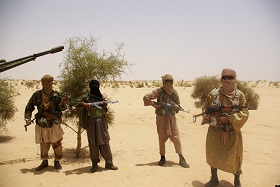
Another possible trend appears to be the further
estrangement of separate Islamist groups from
al Qaeda. Today, al Qaeda is more of a brand
than a terrorist structure, while local cells in
Muslim countries pose a much greater danger
Another possible trend appears to be the further estrangement of separate Islamist groups from al Qaeda, which had been the tip of the iceberg but now appears emasculated after the elimination of its leaders. Today, al Qaeda is more of a brand than a terrorist structure, while local cells in Muslim countries pose a much greater danger. These are lesser known as no one is capable of accurately counting their numbers. These groups, however, form the bulwark for Islamist terrorism in Iraq, Syria, Yemen and other countries. Hence, al Qaeda is giving way to smaller Islamist terrorist units that over time and with proper training could become capable of attacking the U.S.A. and the West.
Efforts to neutralize the Islamist terrorist threat will retain this multi-level scheme and require expanded international cooperation.
At the international level, the United Nations will have to provide the war on terrorism with solutions for political problems and preserve consensus on the inadmissibility of employing and supporting terrorist movements. The greatest pressure is expected to be placed on Iran, which has been found to have links with the Hezbollah. Besides, the UN is likely to be the platform to master the post-conflict peace-building in failed states.
Various ad hoc coalitions of the willing should also increase to permanently replace the international antiterrorist alliance.
On the regional level, we are about to see NATO, CSTO, ANZUS and other regional security organizations using force against terrorist groups all over the world, with NATO turning into a global military tool of the West.
On the state level, the focus is likely to be on bilateral cooperation between states, primarily with the U.S.A. and its allies within the existing or one-time agreements.
Having suffered from terrorism, Russia will remain an energetic contributor to antiterrorist action, concentrating on the North Caucasus and adjacent Central Asian states, i.e. Afghanistan, Kazakhstan, Uzbekistan and other countries.
Is Terrorism a Permanent Threat to International Security?
The new century opened with unprecedented acts of terror that for some time united the world challenged by the global threat of Islamist terrorism. However, terrorism has been known to attract special attention if attacks are persistent and systemic, keeping populations in constant fear. The lack of attacks usually dulls the sense of danger, generating an illusion of a victory. But Islamists have already proven their ability to carry out singular and devastating strikes, which could make terrorism of the 21st century more deadly than ever.
Efforts to eliminate the leaders of al Qaeda have been given paramount importance and born fruit, with bin Laden dead and the organization considerably weakened. Now the threat emanates rather from local terrorist groups that, as has been mentioned, are much less known and with potential still to be evaluated. Since the democratization of technology seems irreversible, they may inflict more damage prior to being uncovered. Thus, the threat has dispersed and has become much more difficult to handle.
Over the past decade, U.S. policy toward the Muslim world has been far from effective. Washington's stake on the democratization of Islamic states has not worked, as the targeted countries now have new regimes with far from traditional democratic ideals established. As a result, counterrevolutions are taking place and generating additional sources of hatred towards the United States which may soon pay a heavy price for its arrogance in spreading democracy to these lands. No matter how strange it may seem, over the past several years, Washington appears to have unknowingly assisted the rise of Islamist terrorism.
The path to victory in the international war on terror is long and laden with a host of problems that generate terrorism. Whereas in the early 2000s the goal seemed quite easily attainable by force, now we clearly see a world engaged in a lengthy confrontation with a potent and resourceful enemy, which is likely to significantly shape the development of international processes in the 21st century.
1. The 9/11 death toll in the World Trade Center, the Pentagon and hijacked airliners amounted to 2,977.
2. Terrorism in Context / Ed. by M. Crenshaw. Penn.: The Pennsylvania State University Press, 1995.
3. A. Malashenko. The Islamic Alternative and the Islamist Project. Moscow: Ves' Mir Publishers, 2006.
4. Modern International Relations: a Textbook / Ed. By A.V. Torkunov, A.V.Malgyn. Moscow: Aspect Press Publishers, 2012.
5. B. Hoffman. Inside Terrorism. New York. Columbia University Press. 1998.
Country Reports on Terrorism 2012. United States Department of State Publications. Bureau of Counterterrorism. May 2013.
(no votes) |
(0 votes) |


